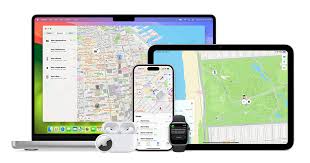The iPad Mini has long been celebrated for its compact size, impressive performance, and portability, making it a favorite among tech enthusiasts. With the introduction of iPadOS 26, this device has undergone a significant transformation, elevating it to a new level of functionality and versatility. The latest operating system brings a host of features that enhance multitasking, file management, and overall user experience, effectively turning the iPad Mini into a formidable portable computing device.
Impressive Specifications
Before delving into the software enhancements, it’s essential to highlight the robust hardware that powers the iPad Mini. Currently available at a competitive price point, the device boasts:
– 8.3-inch Liquid Retina Display: Offers True Tone and a wide color gamut for vibrant visuals.
– A17 Pro Chip: The same powerful processor found in the iPhone 15 Pro and Pro Max, ensuring swift performance.
– Storage Options: Up to 512GB, accommodating extensive apps, media, and documents.
– Apple Pencil Pro Support: Enhances creativity and productivity with precise input capabilities.
– Connectivity: Features Wi-Fi 6E and Bluetooth 5.3 for fast and reliable connections.
– iPadOS 26 with Apple Intelligence: Integrates advanced software features that leverage artificial intelligence for a smarter user experience.
These specifications underscore the iPad Mini’s capability to handle demanding tasks and run sophisticated applications seamlessly.
iPadOS 26: A Game-Changer for the iPad Mini
The release of iPadOS 26 marks a pivotal moment for the iPad Mini, introducing features that were once exclusive to larger, more powerful devices. Notably, the new windowing system and multitasking capabilities are now accessible across all compatible iPad models, including the iPad Mini. This democratization of features ensures that users can enjoy a desktop-like experience regardless of their device’s size.
Key Features Introduced by iPadOS 26:
1. Resizable Windows and Snap Layouts: Users can now open multiple apps simultaneously, resizing and arranging them in floating, side-by-side, or even quad-view layouts. This true multitasking feature allows for a more efficient workflow, enabling users to manage tasks concurrently without constantly switching between apps.
2. Mac-Style Menu and Taskbar: The addition of desktop-like menus (File, Edit, View) that hover over windowed apps provides a more familiar and intuitive interaction method, especially for those accustomed to macOS. This enhancement bridges the gap between tablet and desktop experiences, making the transition between devices smoother.
3. Revamped Files App: The Files app has undergone significant improvements, including full folder customization, tagging, and the ability to place folders directly in the dock. Seamless support for external drives further enhances file management, bringing it closer to the functionality traditionally associated with desktop operating systems.
These enhancements collectively contribute to a more robust and versatile user experience, allowing the iPad Mini to handle complex tasks with ease.
Addressing Display Size Concerns
While the iPad Mini’s 8.3-inch display offers portability, some may question its suitability for extensive multitasking. It’s true that managing multiple windows on a smaller screen can be challenging. However, the flexibility to have apps running in the background for passive tasks adds value. For those seeking a more expansive workspace, integrating the iPad Mini with additional accessories can significantly enhance productivity.
Optimizing Productivity with Accessories
To maximize the potential of the iPad Mini running iPadOS 26, consider the following setups:
1. Netbook-Style Setup:
– Keyboard Case: Pairing the iPad Mini with a compatible keyboard case transforms it into a compact laptop alternative. This setup is ideal for typing-intensive tasks such as writing reports, emails, or coding.
– Mouse or Trackpad: Adding a Bluetooth mouse or trackpad enhances navigation and control, making the experience more akin to using a traditional computer.
2. External Display Integration:
– Monitor Connection: Utilizing the iPad Mini’s USB-C port to connect to an external monitor provides a larger screen for multitasking. This setup is particularly beneficial for tasks that require more screen real estate, such as graphic design, video editing, or extensive spreadsheet work.
– External Keyboard and Mouse: Combining the external display with a keyboard and mouse creates a desktop-like environment, leveraging the iPad Mini’s power in a more stationary setup.
These configurations allow users to tailor their iPad Mini experience to their specific needs, balancing portability with functionality.
Conclusion
The combination of the iPad Mini’s impressive hardware and the transformative features introduced in iPadOS 26 has redefined what this compact device can achieve. Users now have access to advanced multitasking capabilities, enhanced file management, and a more desktop-like interface, all within a portable form factor. By integrating appropriate accessories, the iPad Mini can serve as a versatile tool for both casual and professional use, solidifying its position as a powerful and adaptable device in the tech landscape.


